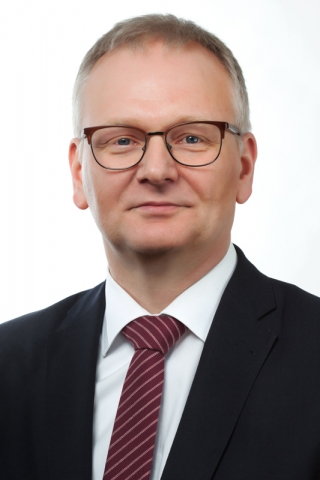le Mag
Corporate philanthropy in Europe, a shared tendency? Focus on 3 large European countries
Expertise

Michael Alberg-Seberich :
In Germany, digitalization is entering the philanthropy space. Data management and data sharing to better understand impact but also as a way to create impact will become crucial for the sector. We just conducted a qualitative study on the effects of digitalization in corporate philanthropy in Germany and the USA which showed that practitioners have high expectations for the improvement of their societal impact through data and digital tools but that the reality is still very far from this gain.
Participative philanthropy is also a topic that is being discussed in the German philanthropy scene. It provides opportunities to give a voice to those people who benefit from the support and thus leads to a more democratic and more transparent giving culture.
Impact Investing is still a trend because it is not yet really implemented by many families, foundations, and corporations. Impact Investing is here to stay but we will see a lot of adaptations of it because of the growing “commercialization” of the field.
Maria Serena Porcari :
Even though Italy is on the 84th place in the last World Giving Index, it is in the third place for philanthropic giving in Europe, with over €9 billion which are being moved by philanthropy to address social issues[1]. In the last ten years, the number of Italian foundations has nearly doubled, while the number of individual donors was reduced from 31% to 19%. The non profit sector represents the 6,4% of economic actions in the country, with more than 350 associations for every 100 for profit companies[2].
On the total amount of grants in Italy, around €4,6 billions come from individual grants, €1,5 from foundations, and the remaining from wills, corporate donations and other kinds of informal giving.
An esteem from Oxford Economics shows that in 2025 the difference between public resources and public services demand will arrive at 70 billion euros. This gap will hopefully encourage philanthropic action.
The Corporate Giving in Italy research held by Dynamo Academy in 2018 shows some more trends about corporate philanthropy in Italy. Since 2017, the 79% of the company sample has increased or maintained their corporate giving stable. The 88% are expecting stability or an increase in giving in 2018.
Moreover, grant-making foundations in Italy have been an important actor in the philanthropy scenario. There are around 6,200 foundations, primarily from banking and private sectors. In the last ten years, the number has almost doubled, showing the willingness of Italian philanthropists to give a majorly structured and strategic contribution.
In 2016, foundation grants outgrew one billion euros. However, trends show that, in recent years, grants from foundations have decreased in volume, leaving space for alternative kinds of philanthropic action (such as corporate giving). The reason of this phenomena is the willingness of the companies to associate much more their philanthropic activities to their name and logo.
Together with the quantitative increase of Italian philanthropy, its quality is changing too. Indeed, in the corporate giving sector, donation types are expanding. Companies are starting to implement other kinds of participation in the community, which go beyond the ordinary grant making, product donations and pro bono services. The social engagement is developing not only with internal policies, but entities are implementing an external approach. The new trend can be identified as “Good Beyond Giving”, and it gives a whole new aspect to philanthropy in Italy.
Tifenn André :
Since 2010, the number of companies deducting donations from corporation tax has steadily increased. The trend for 2017, according to data from the Ministry of Finance[3], is expected to reach 82,000 companies. The same pattern is observed for the amount of donations which goes from 945 million euros in 2010 to an estimate of 2 billion euros for 2017. However, we estimate that the total number of corporate sponsors is much higher : indeed, according to our studies conducted with CSA for several years, in average, only 50% of corporate sponsors use the tax system. The total number of philanthropic companies would therefore be 9% for a budget from 3 to 3.6 billion euros.
Big companies remain the leader of the philanthropy, because they are 81% to take part in actions of general interest. The mid-sized companies make a nice entry into our study, showing a real dynamism and interest for 44% of them. The commitment of small and medium-sized enterprises has been increasing in recent years, particularly for very small businesses that have almost tripled since 2010.
Although financial donation remains the most widely used practice (by 92% of companies), the survey shows a significant increase in skills sponsorship. Indeed, 20% of philanthropic companies used it in 2017, which resonates strongly with the need for meaning and commitment expressed by more and more employees. In-kind donations also increase (39% in 2017), even though it represents only 3% of total donations.
Philantropic companies also show a strong motivation to become professional, particularly with the use of evaluation and measures of impact (in 2017, 17% of companies set up an evaluation and impact policy).
Philanthropy irrigates and influences the other fields of action of the company, such as CSR and sponsoring. Finally, even if direct management remains the main mode of action of companies, some of them (24%) choose to create a dedicated structure to govern their actions, like foundations or dotation funds.
M. A-S : In Germany, the major part of the roughly five billion Euros annually of private donations is still given to humanitarian causes, which include churches/religion, child and youth aid, emergency and disaster relief, and illness/disability. Further private giving causes are animal protection and culture & heritage preservation, and environment protection.[4] Corporations on the other hand give primarily to sports followed by the areas of education and upbringing, social issues, and recreation and socializing.[5]
M. S-P : Philanthropy in Italy covers a variety of areas, but the causes which receive the majority of funding are culture, sports and recreation (around 20%). In the second spot, there are social service programs, receiving around 18%. At the third place, healthcare receives more than the 10% of the total giving. These numbers show that corporations choose to invest in the areas were the public expenditure fails: Italian associations of culture and sport are really poorly supported, such as social service programs.
The donation sectors that follow, in decreasing order, are: primary and secondary education, research, economic development, human rights protection, emergencies and catastrophes, superior education, philanthropy in general, environment, cooperation and international solidarity and religion[6].
T.A : We note that the leading trio of the sectors most supported by philanthropy (in terms of budget) remains unchanged. The social field (which includes job creation, advocacy and social entrepreneurship support) remains at the top of the ranking, accounting for 28% of spending. The culture / heritage sector is growing strongly (the budget has increased from 15% to 25% between 2015 and 2017) and then the education sector, which is also increasing (from 14% to 23%)[7]
Further behind, health (11% of spending), although this is the most important area to support for the French citizens[8]. The environment is not very well supported (7% of the total budget), as the international solidarity (4%) and sport (2% of the budget, while it is the most popular sector for companies, especially SMEs and SMEs) and research (which suffers from a significant drop in total donations).
M. A-S : First, it is crucial to exchange information, ideas, and trends. Approaches might not always be applicable in the different “markets”, however learnings from a different context are still valuable and perhaps also adjustable for one’s own country. The world of philanthropy could be a lot more efficient if we would take the time to learn from each other. This could also include together with European infrastructure organizations to ensure access to European and comparative data on philanthropy.
We should also establish different formats of idea and people exchanges. Maybe even a European format of CECP’s Global Exchange could be a good forum. Our common goal should be to guide donors and social investors to give in a more strategic way and thus maximize their social impact. We should also advocate with the relevant stakeholders for an easier way to give and collaborate transnationally so that in the future there will also be a single market for social engagement, and a true European Philanthropy.
M. S-P. : There are plenty of ways of enhancing the collaboration between those European institutions which have the objective of developing philanthropy.
Firstly, sharing is important. In order to build a network of philanthropists, the institutions should promote the knowledge spill-over, putting all efforts together to find new ways of contributing to the common good.
Secondly, it is important to meet periodically, in order to know the people and entities we are facing and cooperating with. There should be many occasions of networking, maybe in annual meetings, in alternating locations, and monthly updates by phone or videoconferences.
Thirdly, the network should communicate its purpose and strengths involving to the other sectors, in order to include them and lead them into philanthropy. The institutions should be seen as a whole, and create a movement which pulls more and more people and institutions towards its purpose.
The last suggestion is to give the coalition clear and quantifiable objectives: this would be fundamental to have common goals, to verify the work ongoing and ex post. These objectives could be either of short and long term, guiding the common work for years.
T.A. : The exchange and sharing of information are essential between European countries, in order to have a better visibility of the actions on the continental scale.
But actions must be accompanied by reliable and effective legal devices. The Persche judgment is a good example of a legal framework accompanying the free movement of capital, giving rise to cross-border philanthropy and more sustained exchanges between European countries. However, the application on the ground of this judgment is sometimes very complex.
The question of the harmonization of practices and / or the legal framework should then be raised, inviting the European countries to reflect together on this question. This had been the case with the creation of the European Foundation Statute, allowing companies to better focus on public utility causes at EU level. Currently, very little progress has been made in the legislative field. Perhaps we could rethink this proposal and unite to create a common advocacy, in order to advance the proposed laws.
[1] https://www.vita.it/it/article/2017/10/17/la-filantropia-in-italia-muove-91-miliardi-di-euro/144834/
[3] Datas from the DGFIP for the Observatory of Philanthropy / Fondation de France (2010-2015) ans Admical (2016)
[4] Bilanz des Helfens 2018: https://www.spendenrat.de/wp-content/uploads/2018/02/Bilanz_des_Helfens_...
[5] CC-Survey 2018: Unternehmensengagement und Corporate Citizenship in Deutschland
[6] Research Corporate Giving In Italy 2018 – Dynamo Academy, SDA Bocconi University and University of Milan
[7] 2 focus on Sport and Culture sectors are detailed at the end of the barometer Admical/CSA (October 2018)
[8] Etude « Les Français et le mécénat » (Admical/Kantar Public, October 2017)
 Beyond Philanthropy
Beyond Philanthropy
Michael Alberg-Seberich is Managing Director at Beyond Philanthropy, a German advisory firm for foundations and companies, specializing in philanthropy, corporate social responsibility, and social investment. He is responsible for the development of business and people.
>> Beyond Philanthropy changes its name and becomes Wider Sense ! Click here to discover the organization.
Maria Serena Porcari is graduated in Business Administration from the Bocconi University and began her career in the profit field in IBM where she was a manager for 9 years. She is an independent director of non-profit organizations and listed companies and a member of the social inclusion committee of the Giusti – Palermo Institute of Milan, elementary and middle schools.
 Admical
Admical
Tifenn André, psychologue de formation, s’est rapidement tournée vers le monde de la pédagogie et de la formation professionnelle. Elle met aujourd’hui ses compétences à disposition du mécénat comme directrice de la professionnalisation, développant la professionnalisation des acteurs de l’écosystème du mécénat et de la philanthropie par des formations et des contenus toujours plus adaptés.


